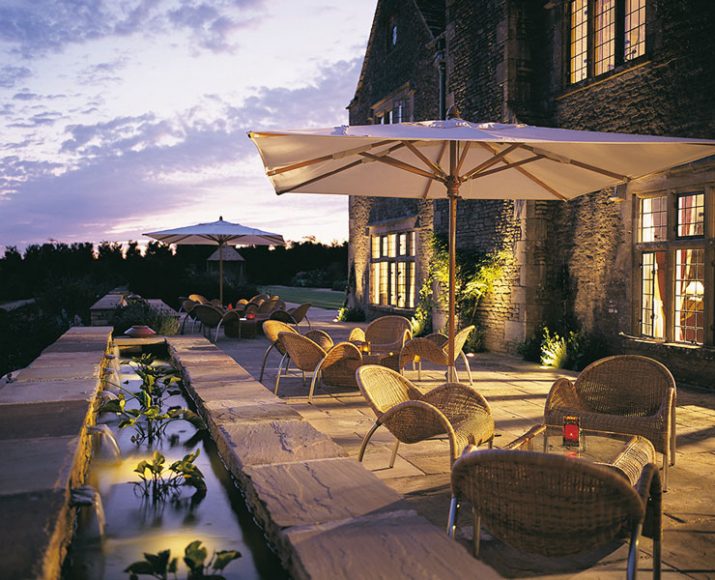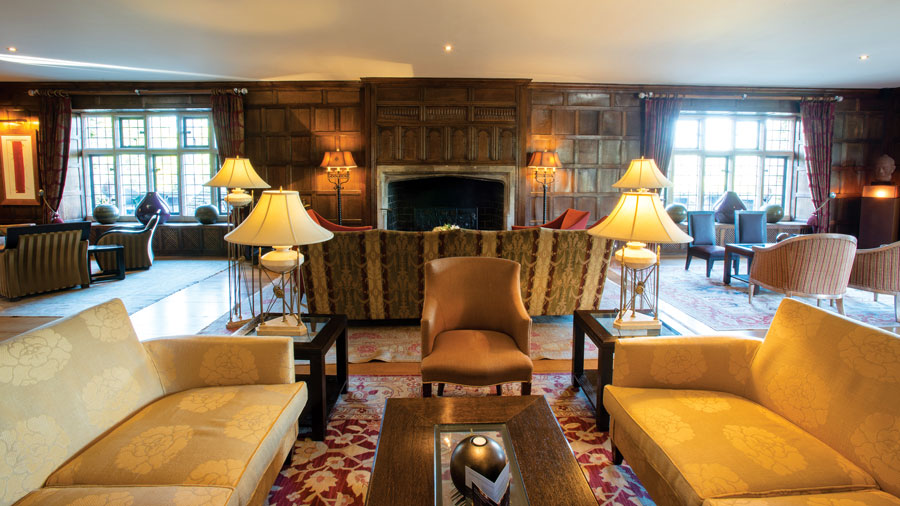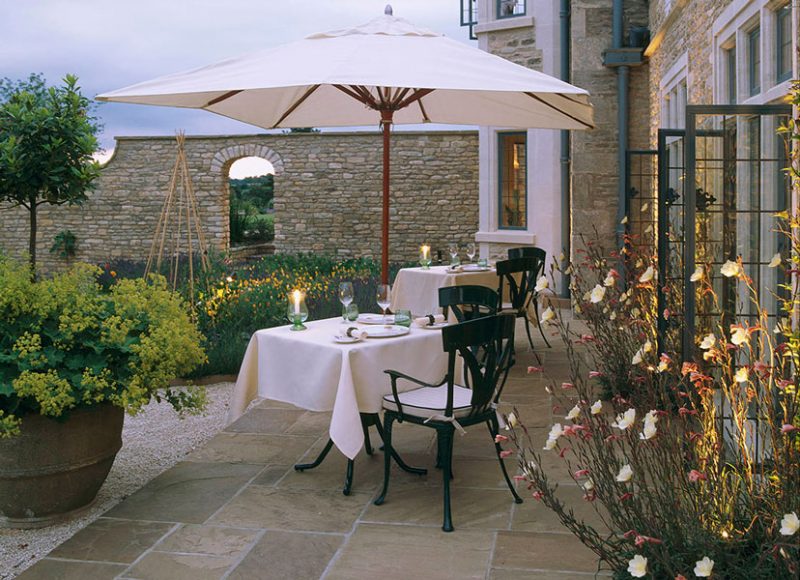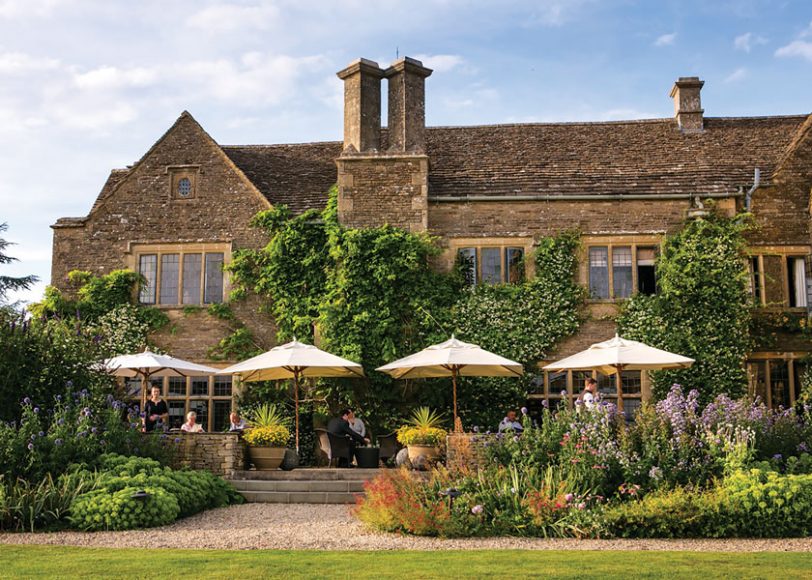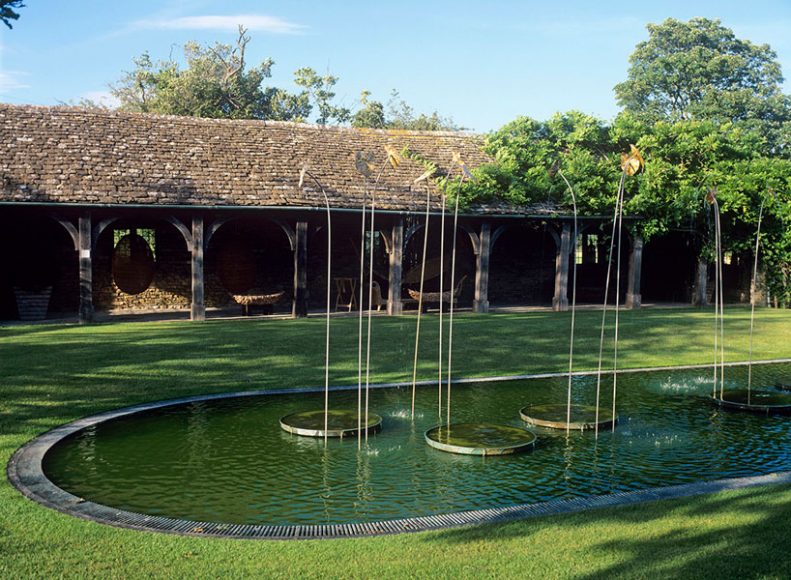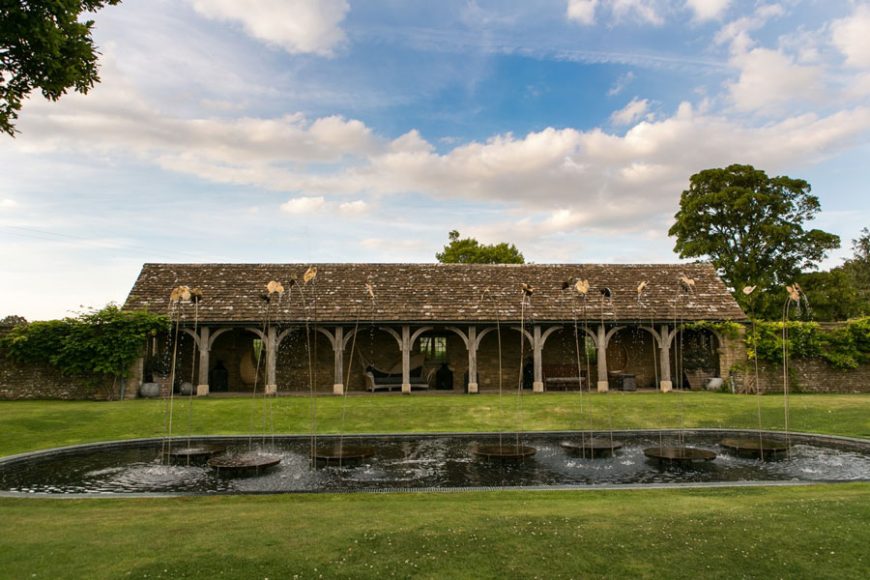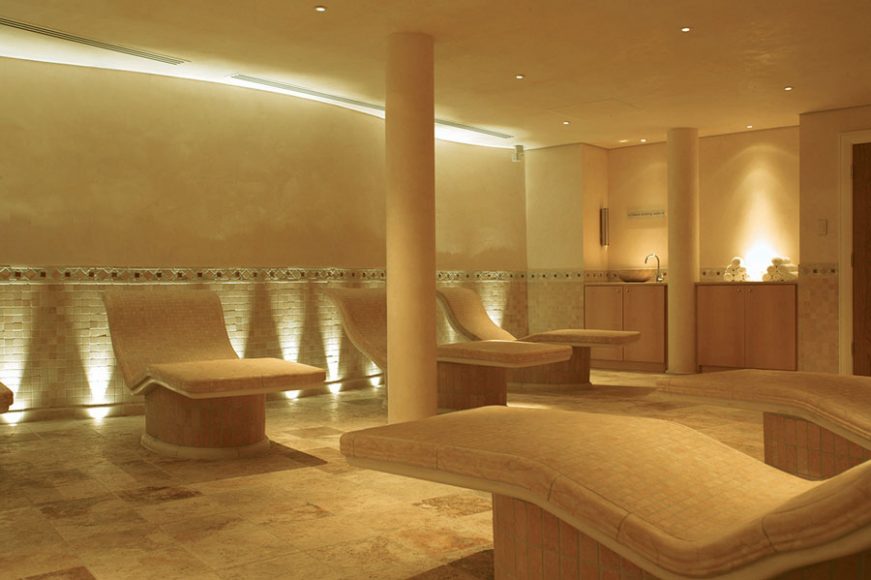The Cotswolds, that large cluster of ravishingly lovely small towns and villages less than 100 miles from London, seem to be everybody’s dream vision of the countryside. And it’s true: rural England doesn’t get much better. Think of the Cotswolds and what comes to mind are winding lanes, manicured lawns, houses and cottages of warm, honeyed stone. (It’s the region’s bedrock of golden Jurassic limestone we have to thank for those.) Primped hedgerows, ancient stone walls, great canopies of willow and curving oak trees, along with gurgling brooks and streams, complete the picture.
But if, apart from their sheer loveliness alone, the Cotswolds have any singular claim to fame, it would surely have to be their magnificent gardens. From Blenheim Palace in the north down to Prince Charles’ weekend place, Highgrove, in the south, the Cotswolds have glorious gardens galore.
Blenheim Palace, dating from 1705, was built by the Duke of Marlborough, its gardens designed by Capability Brown. After touring the palace (one of the largest houses in England), save some energy for the sumptuous gardens — the water terraces, the arboretum, the rose garden and the Temple of Diana. Still on your feet? Take the miniature train to explore the pleasure gardens and the world’s second largest hedge maze, which lie on the far side of the vast estate. Blenheim, by the way, has impeccable American connections — it was saved from certain ruin by the 9th Duke of Marlborough’s propitious (if loveless) marriage to the American railroad heiress Consuelo Vanderbilt back in 1895.
Over to the west, another American émigré, the horticulturalist Lawrence Johnston, was responsible for Hidcote Manor Garden, with its magnificent “green architecture of garden rooms,” including the breathtakingly lovely circular raised pool, many “secret” gardens, and stunning vistas. Born into a family of wealthy Baltimore stockbrokers, Johnston — whose passion for plants, it’s said, bordered, no pun intended, on the fanatical — also helped his friend Heather Muir create the Arts & Crafts-inspired Kiftsgate Court Gardens, near Chipping Campden, a few miles south of Hidcote. Go soon to enjoy Kiftsgate’s glorious bluebell woods, because by the end of May they will be over for another year.
An hour’s drive from Chipping Campden brings you to Westonbirt, near Tetbury, the most important arboretum in England, with more than 25,000 plant species and 15,000 trees from the far-flung corners of the earth. And just a few miles away from Westonbirt is Highgrove. Open to the public between April and October, Highgrove represents a 35-year odyssey for HRH The Prince of Wales, aka Prince Charles, to transform the gardens into what they are today. From the classic Cottage Garden to the wildflower Meadow, quite apart from their knock-your-socks-off loveliness, the Highgrove gardens, like the rest of the estate, are an object lesson in sustainability and organic methods, which have always been a passion of the prescient prince.
If you’ve never experienced the southern English countryside in summer, this is something you need to do. The air is not as soft or scented as Tuscany or the Mediterranean, perhaps, and the night sky neither as starry nor velvety as Provence. But an ancient, Arthurian magic seems to hang in the air like a whisper or spell, and for a calm and stillness broken only by a distant church bell, the thwack of a cricket ball on the village green, a hay-cart rattling along a country road, or the nighttime to-whit-tu-whoo of a wise old English owl, there is nowhere like it.
A Cotswold garden is a thing of beauty all right, but any keen gardener needs somewhere to hang her or his hat. Twelve minutes drive from Highgrove, a mere six from Westonbirt, lies wonderful Whatley Manor, a Relais & Châteaux property and one of England’s loveliest country house hotels.
Whatley is traditional without being stuffy, secluded without being remote, proper without being pretentious, highborn with a highly developed sense of noblesse oblige and, best of all, rather good fun. Rooms and suites are vast, all looking spruce after a light reno earlier this year, suite bathrooms are large enough to host a sizable dinner party in, and the superb Aquarias spa features luxurious Natura Bissé products.
What’s more, Whatley has gardens of its own is spades — 26 gardens of immense beauty, along with expansive lawns, which compete with the best the Cotswolds have to offer.
Great food, too, is an integral part of the Whatley experience. Chef Niall Keating has a résumé as long as both your arms (including a year spent as chef de partie at three-Michelin-starred Benu in San Francisco) and has been building on Whatley’s formidable kitchen reputation since taking up the whites here three years ago.
Breakfast is superb. I like the “back” dining room, flooded with cheery morning light, where you can feast on a “full English,” the crispest local bacon and plumpest Wiltshire sausages, or porridge, lusciously smooth, served healthily with berries or made extra rich (for cream-nuts like me) with a swirl of decadent Somerset cream.
Lunch could be a couple of courses in Grey’s brasserie, Whatley’s informal brasserie, or a luxurious club sandwich with a soft-boiled egg and skinny fries overlooking the croquet lawn, to the gentle sound of babbling water running along the low stone walls that border the grass.
Enjoy your Wiltshire cream tea, with its sandwiches, cakes and scones, early in the afternoon, because trust me, you will need to pace yourself for Keating’s 12-course dinner.
Early evening is a magical time at Whatley. The roses in the rose garden seem fuller and blowsier at the day’s end than at any other time, and the deep, herbaceous borders seem to sigh almost audibly as dusk falls, the exigencies of the day over, the afternoon heat diminishing now. It’s watering time at last, when the sprinklers come on at the end of the day, which I like to think is the cocktail hour of the plant world. Lupins, hollyhocks, lilies and hydrangeas, delphiniums and coneflowers all running riot, running wild — wild, yet tamed by legions of gardeners. “Nature to advantage dressed” as Alexander Pope, poet of the Enlightenment, might have expressed it.
You’ll want to walk at Whatley, and after all this food you’ll need to. Up to the Loggia Garden at the top of the tiered terraces, with its long, limpid pond, Giacometti-like, sculptural reed fountains and ornamental lily pads. Or down to the river, with its wild flowers running along the banks, bosky and buzzing with vernal insects today. I first walked along the bank here 15 years ago, in heavy boots on a bitter January day, sinking into the mud and long grass, raw to the bone and only too happy to climb the hill again, to Whatley’s warmth, a crackling fire in the drawing room grate.
Yes, winter too has its story at Whatley, but no one’s thinking of the cold tonight, sitting on the divine terrace around the olive tree, feasting on tempura of eel with citrus aigre-doux — which, by the way, goes great with Bacchus, an award-winning white wine from the local Maud Heath vineyard — or on Keating’s lobster custard, or his peerless local spring lamb. “It’s the best in the world,” says Whatley’s head sommelier, Daniel Davies, as he passes, placing a basket of 18-hour proved sourdough on the table. In truth, I’m not sure if he’s talking about the bread, or the wine, or the tempura, or the night, or the place, but I am not going to disagree with him.
For more, visit blenheimpalace.com, highgrovegardens.com and whatleymanor.com.

